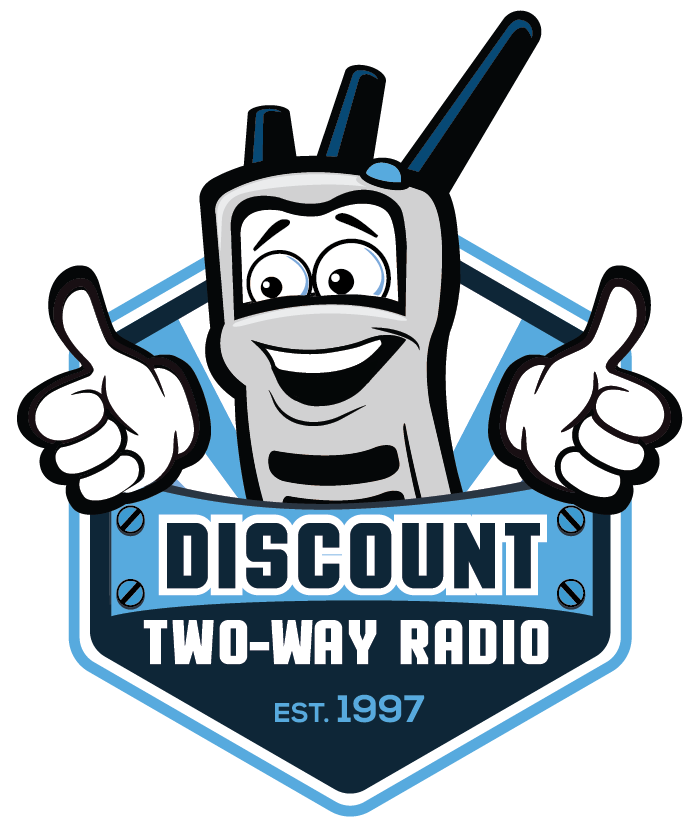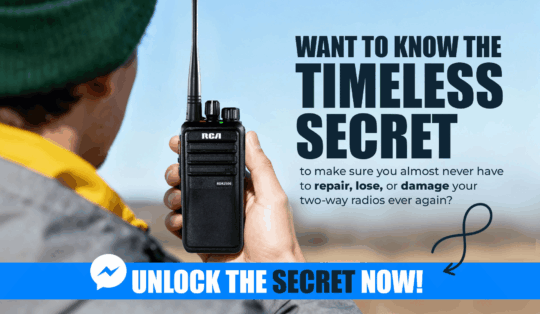
Your Ultimate Two-Way Radio Checklist for Clear Communication
A comprehensive two-way radio checklist will ensure that your units are always ready and reliable. Here are the steps we think you should follow before, during, and after their use.
Pre-Use Checklist
1. Equipment Inspection
Before you even turn on your two-way radio, inspect it for any physical damage or wear and tear — especially on its antenna, as a faulty one can severely impact its performance.
Next, verify that its battery is charged and correctly inserted.
Finally, make sure its microphone and speaker are clear of any obstructions that might negatively affect sound quality.
2. Battery and Power
Besides verifying that your current radio battery is charged — and that it’s been charged the correct way — you’ll also want to make sure that you have plenty of spare ones available.
This is particularly important for users who will be working for extended periods of time in areas that don’t have access to radio charging equipment.
While it might seem like a silly reminder, always make sure your radio turns on before you leave.
3. Channel and Frequency
Set your two-way radios to the correct channels and frequencies as designated for your team, and confirm that all team members have done the same. Be aware of any channel restrictions or permissions so that you avoid interference.
Knowing the designated channels for different purposes (e.g., main communication, backup, emergency) can streamline operations and avoid confusion.
4. Volume and Sound Quality
Adjust your radio volume to an appropriate level and perform a sound check to ensure clarity. Make sure the squelch level is set correctly to minimize background noise.
Periodically check your sound quality during use, as environmental factors can affect it. Adjusting the volume in response to ambient noise levels ensures messages are heard clearly.
5. Accessories
Test any connected accessories, like Headsets or Earpieces, to ensure optimal functionality. When using a headset, check that it fits comfortably and that its microphone is positioned correctly.
Secure any loose cables to prevent them from snagging, as this has the potential for user injury and radio damage.
Usage Checklist
1. Communication Protocols
Use clear and concise language when speaking through your two-way radio.
Employ standard radio terminology, phrases, and codes like “Over,” “Copy,” and “Affirmative” to reduce the chances of miscommunication. Practice these with workers who don’t know them.
Wait for a response before continuing the conversation to ensure messages are received and understood.
2. Emergency Procedures
More than likely, your company has an established procedure for reporting emergencies. As this pertains to two-way radios, you’ll want to know what emergency features are available, as well as the emergency frequency or channel designated for your business. You’ll need to verify that this frequency or channel is programmed into your two-way radio, and check with your colleagues to make sure they know how to access it, too.
Perform regular drills and training sessions to reinforce your safety procedure so that everyone is prepared.
3. Etiquette
Avoid unnecessary chatter to keep your radio channel clear for important communications. Be mindful of the time and allow others to speak. Use call signs or identifiers to maintain clarity and professionalism.
Respecting radio etiquette not only improves efficiency but also ensures that critical messages are not missed.
4. Coverage and Signal Strength
Be aware of your radio’s coverage limitations. If you experience poor signal strength, move to a higher location. Be mindful of your terrain and how it could affect your transmissions.
Periodic testing can give you and your team a better understanding of your equipment’s capabilities, whether you need to boost your coverage with powerful repeaters, and the tell-tale signs of degraded batteries.
5. Battery Management
Besides checking your radio’s battery life, it’s also a good idea to turn your unit off when it isn’t actively needed. Consider using battery-saving modes if your radio supports them, as well as carrying portable chargers and spare batteries.
If you need handheld models that are designed for long battery life, consider options like RCA’s RDR2500 series.
Post-Use Checklist
1. Cleaning and Maintenance
After using your two-way radio, wipe it down with a soft, dry cloth. Remove any dust or debris from the microphone and speaker areas. Inspect the radio for any damage that may have occurred during its use and address it promptly.
Regular cleaning and maintenance can significantly extend the life of your equipment.
2. Battery Care
Recharge batteries fully before storing them. Keep them in a cool, dry place to maintain their longevity. Remove them from radios when they won’t be used for an extended period of time so as to prevent leakage or damage.
Proper battery care ensures your radios are ready for the next use and can prevent costly replacements.
3. Storage
Store your radio and its accessories in a protective case. Similar to batteries, it should be stowed in an area that is cool, dry, and away from direct sunlight. Ensure your team members do the same with their radios, and that everyone knows where they’re housed for easy access.
Organizing storage properly helps protect your radio fleet and ensures quick deployment when needed.
You may also consider Engraving your radios for better accountability and periodic maintenance, which ties into our final step.
4. Documentation
Record any issues or malfunctions you encounter with your radios for future reference. Note any preventative maintenance, damage, or concerns to make it easier for technicians to identify what could be affecting your radios when you send them out for repair.
Have Questions About Our Two-Way Radio Checklist?
This detailed two-way radio checklist will help you maintain clear, reliable communication. If you have questions about any of these steps, the radios you currently use, or any new ones you may need, don’t hesitate to give us a call at (888) 299-6340!





No Comments